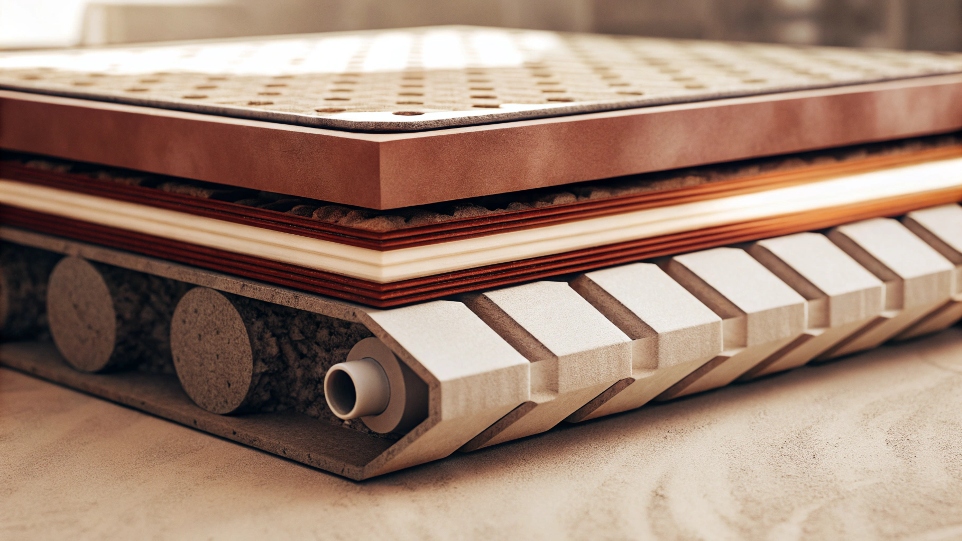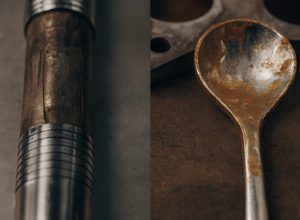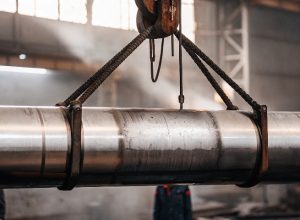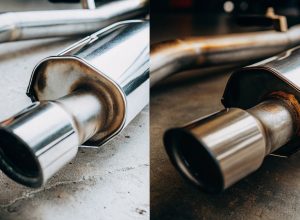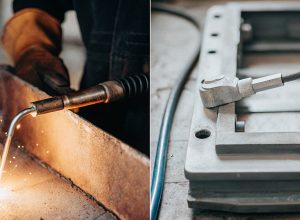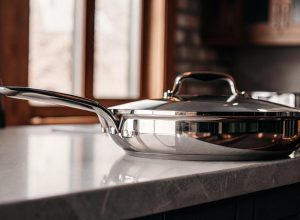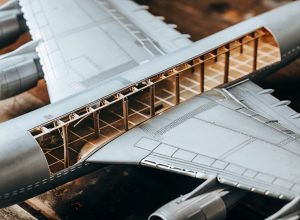Выбор подходящего материала для военная защита1 имеет решающее значение. Неправильный выбор ведет к уязвимости и напрасной трате ресурсов. Давайте разберемся, делает ли прочность титана оптимальным выбором.
Титан - фантастический материал для брони благодаря своей высокой прочности и малому весу. Однако его стоимость очень высока, поэтому композитная броня, например сталь в сочетании с керамикой, часто является более практичным решением для крупных машин, таких как танки.
Я часто общаюсь с такими менеджерами по продукции, как Лиза, которым необходимо найти баланс между производительностью и стоимостью промышленного оборудования. Проблемы удивительно похожи на те, что возникают в оборонной промышленности. Вам нужен материал, способный выдерживать экстремальные условия, но при этом он должен вписываться в бюджет проекта. Этот баланс является ключевым. Давайте рассмотрим, как титан вписывается в это уравнение для брони, начиная с его текущего использования в танках.
Используется ли титан в танковой броне?
Вы слышите о передовых материалах, но что на самом деле используется в современных танках? Ответ может сбить с толку. Давайте посмотрим, где титан действительно используется на поле боя.
Да, титановые сплавы используются в некоторых современных танках, но, как правило, не во всем корпусе, а в отдельных, более мелких компонентах. Они часто встречаются в пакетах модернизации или там, где экономия веса имеет решающее значение.
Я работаю на заводе в Баоцзи, мы производим титановые сплавы для самых разных видов работ. Хотя большая часть нашего сплава Grade 5 идет в аэрокосмическую отрасль или на химические заводы, принципы работы одинаковы и для военного применения. Клиенту нужна деталь, которая была бы прочной, легкой и устойчивой к повреждениям. В таких танках, как американский M1 Abrams, вы не найдете главного корпуса из титана. Это по-прежнему удел высокотвердой стали и композитных массивов. Но титан нашел свою нишу.
Где он используется?
Инженеры используют титан для изготовления специальных деталей, чтобы снизить вес без потери защиты. Подумайте о таких вещах, как:
- Люки командира и наводчика
- Прикладные бронепластины (дополнительные слои прикреплены болтами)
- Внутренний вкладыши от сколов2 для защиты экипажа от осколков
Я помню проект с европейским клиентом, которому нужна была легкая, устойчивая к коррозии рама. Мы рекомендовали титановый сплав. То же самое можно сказать и о люке танка. Если сделать его из стали, он будет очень тяжелым для открытия и закрытия. Использование титана делает его намного легче и проще для экипажа, что очень важно в боевой обстановке.
| Характеристика | Сталь (RHA) | Титан (Ti-6Al-4V) |
|---|---|---|
| Плотность | Высокий (~7,8 г/см³) | Низкий (~4,4 г/см³) |
| Основное использование | Главный корпус, турель | Люки, специфические обновления |
| Преимущество | Недорогие, хорошо изученные | Отличное соотношение прочности и веса |
| Недостаток | Очень тяжелый | Очень дорого |
Поэтому, хотя титан и не является основным материалом, он играет важную вспомогательную роль.
Какой металл лучше всего подходит для танковой брони?
Вы ищете единственный "лучший" металл для танковой брони? Этот поиск может оказаться сложным, поскольку разные угрозы требуют разных решений. Давайте переосмыслим, что значит "лучший".
Не существует какого-то одного "лучшего" металла. Наиболее эффективная танковая броня - это композитные системы. В таких системах для борьбы с различными угрозами используется сочетание материалов, таких как высокотвердая сталь, керамика, а иногда и специализированные материалы, например обедненный уран.
Это напоминает мне разговоры с Лизой. Она спрашивает о "лучшей" марке титана для химического реактора. Ответ всегда такой: "Это зависит от конкретных химикатов и температуры". Та же логика применима и к броне. Вы должны учитывать все угрозы. Современные танковые боеприпасы бывают двух видов.
Кинетические и химические угрозы
- Проникающие устройства с кинетической энергией (KE): Они похожи на гигантские металлические дротики, часто сделанные из вольфрама или обедненного урана. Они используют чистую скорость и плотность, чтобы пробить броню. Чтобы остановить их, необходим очень твердый и плотный материал.
- Угрозы химической энергетики (ХЭ): Это снаряды типа HEAT (High-Explosive Anti-Tank). Они не полагаются на скорость. Вместо этого они детонируют на поверхности брони, создавая струю расплавленного металла, которая прожигает ее насквозь.
Ни один металл не способен остановить оба. Сталь хороша против KE-угроз, но может быть уничтожена струями CE. Именно поэтому современная броня представляет собой сэндвич из различных материалов. Слой твердой керамики разрушает KE-снаряд, а разнесенные слои стали и других материалов разрушают CE-снаряд.
| Материал брони | Эффективна против КЭ | Эффективна против СЕ | Примечания |
|---|---|---|---|
| Высокотвердая сталь | Хорошо | Ярмарка | Базовый, экономичный материал. |
| Керамика (например, глинозем) | Превосходно | Хорошо | Разбивает летящие снаряды, но очень хрупок. |
| Титан | Очень хорошо | Хорошо | Легче, чем сталь, но очень дорогой. |
| Композитные системы | Превосходно | Превосходно | Современный стандарт, сочетает в себе материалы. |
Таким образом, "лучшая" броня - это вовсе не металл, а продуманная комбинация материалов, созданная для совместной работы.
Может ли титан стать хорошим бронежилетом?
Необходимость в индивидуальной защите без тяжелого веса - настоящая проблема. Тяжелая броня замедляет движение, но оставаться без защиты - не вариант. Давайте посмотрим, как титан поможет решить эту проблему.
Безусловно. Титан - отличный материал для высокопроизводительных бронежилетов. Благодаря высокому соотношению прочности и веса он обеспечивает надежную защиту при гораздо меньшем весе, чем сталь, что делает его идеальным для спецподразделений и полиции. тактические подразделения3.
Титановый сплав Grade 5, или Ti-6Al-4V, - это продукт, с которым я работаю каждый день. Мы ковали его, испытывали и сертифицировали для клиентов, которым нужна высочайшая производительность. Это рабочая лошадка титановой промышленности. Благодаря своим свойствам он идеально подходит для ситуаций, когда важна каждая унция, например, для бронежилетов. Когда солдату приходится тащить снаряжение на себе километры, уменьшение веса бронепластин значительно повышает его выносливость и мобильность.
Баланс между весом, защитой и стоимостью
Хотя в стандартных военных бронежилетах часто используются керамические пластины (например, пластины SAPI), титан предлагает убедительную альтернативу. Керамические пластины легкие и обеспечивают отличную защиту, но при ударе они могут треснуть и потерять свою целостность. Титановая пластина может выдержать несколько ударов.
Вот как они соотносятся для типичных винтовочных пластин:
| Материал | Стандартный вес | Возможность нанесения нескольких ударов | Относительная стоимость |
|---|---|---|---|
| Сталь AR500 | Высокий (8-9 фунтов) | Превосходно | Низкий |
| Титан (Ti-6Al-4V) | Средний (5-6 фунтов) | Очень хорошо | Очень высокий |
| Керамика (уровень IV) | Низкий (4-5 фунтов) | От плохого до хорошего | Высокий |
Я работал с менеджерами по продукции, которым необходимо соблюдать строгие ограничения по весу оборудования. Они выбирают титан, даже если он стоит дороже, потому что снижение веса4 обеспечивает критическое преимущество в производительности. Точно такой же компромисс можно найти и в бронежилетах. Для элитного солдата дополнительная мобильность и выносливость стоят того.
Почему титан не используется в броне?
Если титан такой прочный и легкий, почему он не является стандартным материалом для всех доспехов? Вы наслышаны о его удивительных свойствах, поэтому его отсутствие может вызвать недоумение. Давайте выясним истинную причину.
Это распространенное заблуждение - титан это используется в доспехах, только выборочно. Главная причина, по которой он используется не везде, - это его высокая стоимость, которая включает в себя все: от обработки сырья до сложности изготовления.
Самым большим препятствием для титана всегда была его цена. Когда я предлагаю проект такому клиенту, как Лиза, стоимость титана по сравнению с нержавеющей сталью является основным предметом обсуждения. Нам приходится оправдывать расходы повышением производительности. Для такого массивного объекта, как танк, оправдать эту стоимость становится практически невозможно.
Разбивка стоимости
Высокая стоимость титана обусловлена двумя основными причинами:
- Добыча и обработка: В отличие от железа, титан сложно добывать из руды. Процесс Кролла, который используется для его рафинирования, чрезвычайно энергоемкий и медленный. Из-за этого само сырье во много раз дороже стали.
- Изготовление и сварка: Обработка титана сложна для инструментов и требует более низких скоростей, чем сталь. Сварка титана еще сложнее. Она должна выполняться в инертной атмосфере, обычно с использованием газа аргона, чтобы предотвратить его хрупкость. На нашем заводе в Баоцзи есть целые участки, отведенные под эти специализированные процессы. Создание всего резервуара таким способом было бы невероятно дорогим и долгим.
| Фактор | Сталь | Титан |
|---|---|---|
| Стоимость сырья | Низкий | Высокий |
| Сложность обработки | Легко | Hard |
| Процесс сварки | Простой | Сложный (требует экранирования) |
| Общий индекс стоимости | 1x | 10x - 20x |
Таким образом, решение не делать весь танк из титана связано не с характеристиками. Дело в экономике. Небольшой выигрыш в производительности не стоит огромного увеличения стоимости такой большой машины.
Заключение
Титан - это высокоэффективный броневой материал, ограниченный своей высокой стоимостью. Композитная броня - практичный выбор для танков, в то время как титан отлично подходит для специализированных целей, например, для легких бронежилетов.
-
Будьте в курсе новейших технологий, повышающих военную защиту. ↩
-
Узнайте, как противоосколочные вкладыши защищают военнослужащих от осколков. ↩
-
Изучите важность бронежилетов для тактических подразделений в боевой обстановке. ↩
-
Узнайте, как снижение веса может повысить эффективность военной техники. ↩



